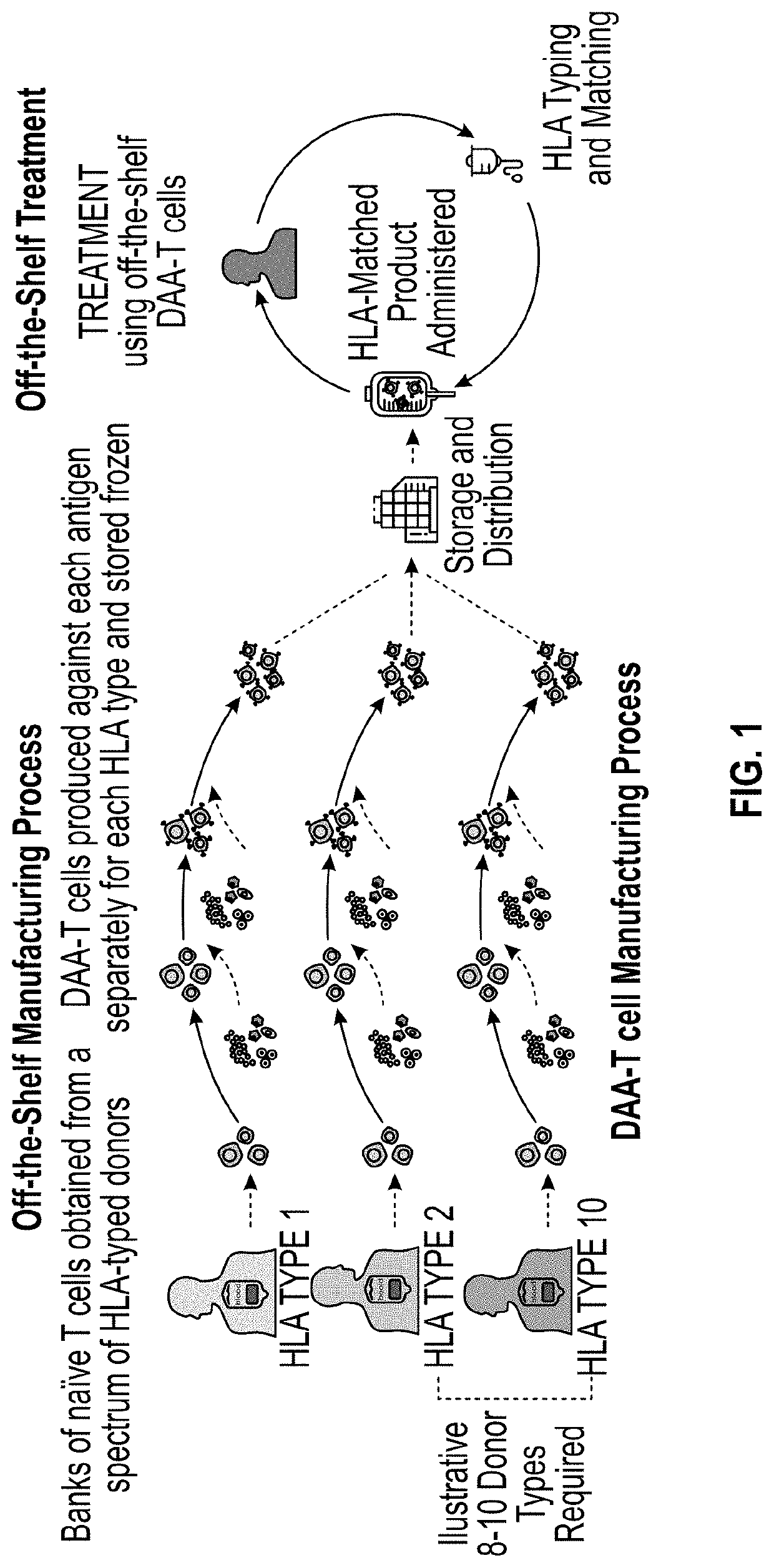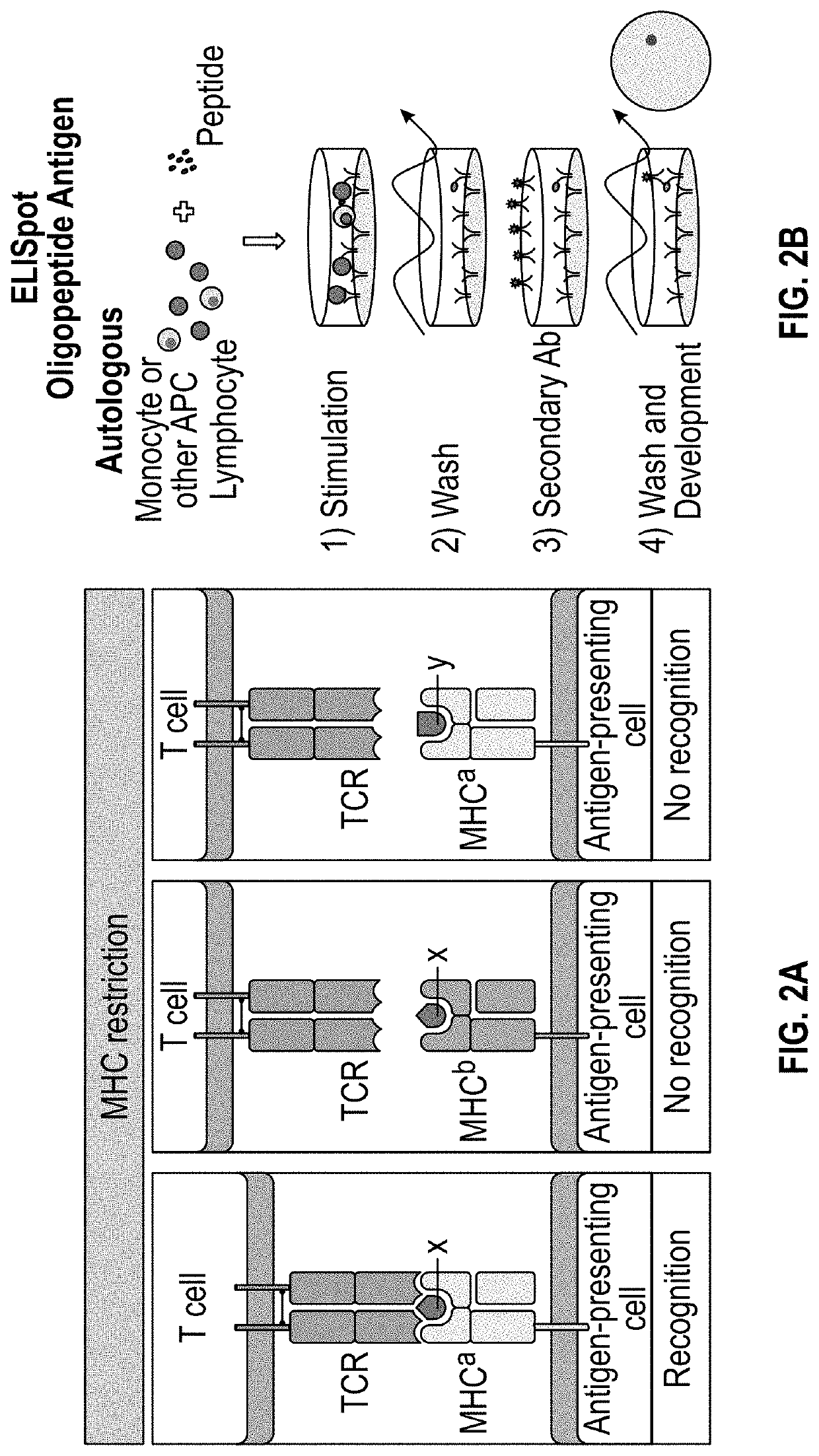Methods and delivery of allogeneic cell products
a technology of allogeneic cells and products, applied in the direction of antibody medical ingredients, instruments, drug compositions, etc., can solve the problems of generating and identifying non-engineered t cells which can most effectively work
- Summary
- Abstract
- Description
- Claims
- Application Information
AI Technical Summary
Benefits of technology
Problems solved by technology
Method used
Image
Examples
example 1
Generation of Sf9-Based aAPCs
[0156]A panel of aAPCs was generated using the insect cell line Sf9 as a cell source. Sf9 does not express any of the TAAs and is devoid of MHC antigen expression. It therefore represents an example of a suitable host cell line of the instant invention. Sf9 cells were transfected with an insect expression plasmid encoding one of 3 single-chain HLA molecules (scHLA): A*02:01, A*03:01, and C*07:02. These single scHLA constructs consist of the allele-specific HLA-heavy chain covalently linked to β2-microglobulin. The cell lines were validated for HLA surface expression by flow cytometry using an antibody (clone W6 / 32) with pan-HLA-class-I reactivity as shown in FIG. 6.
[0157]Next, Sf9-based aAPCs were pulsed with pooled antigens comprised of 15-mers derived from CMV pp6, PRAME / WT1 or irrelevant antigen (actin).
example 2
ation of HLA-Restriction of Antigen-Specific T Cells when Incubated with Sf9-Based aAPCs using INF-γ Response as a Readout
[0158]One viral-specific T cell (VST) product and one representative DP i.e., a TAA-specific T cell product, were tested against the aAPCs. The donors for these effector cells were selected based on HLA profile and known reactivity against specific antigens: either Cytomegalovirus (CMV) antigens for the VST product or TAAs for DP. HLA-expression profiles and antigen reactivity are described below in Table 1.
TABLE 1HLA Profile and Antigen Reactivity of Effector Cell Products TestedTestAntigenSampleReactivityHLA-A1HLA-A2HLA-B1HLA-B2HLA-C1HLA-C2VSTCMV pp65A*02:01A*02:01B*40:01B*49:01C*03:04C*07:01DP Run 3PRAMEA*01:01A*02:01B*08:01B*27:02C*02:02C*07:01WT-1
[0159]Next, VST and DP were tested for single HLA-antigen reactivity by co-incubating them with pulsed Sf9-based aAPCs. Cells were seeded at an E:T ratio of 1:1 on commercially prepared human IFN-γ ELISPOT plate (CT...
example 3
Generation of Raji-Based aAPCs
[0162]As another source of of aAPCs, Raji cells, a human cell line derived from B-lymphocytes were evaluated. Raji cells have little to no endogenous expression of TAAs. While wild-type Raji cells exhibit endogenous surface expression of HLA molecules, it was possible to obtain single HLA expressors of target HLA Class I alleles from Millipore-Sigma. These monoallelic HLA expression cell lines are derived from a Beta-2-microglobulin ((β2M) knockout (KO) Raji parental line. Knocking out the β2M gene inhibits surface expression of native HLA Class I molecules. Without additional genetic modification, this parental line is devoid of endogenous HLA class I expression at the cell surface. To generate the monoallelic HLA cell lines, lentiviruses were used to transduce the parental β2M KO line with a β2M:HLA fusion protein as described in Nature Biotechnology 35, 765-772, (2017). Eight total monoallelic HLA cell lines were available for testing: HLA-A*02:01, H...
PUM
| Property | Measurement | Unit |
|---|---|---|
| Biological properties | aaaaa | aaaaa |
Abstract
Description
Claims
Application Information
 Login to View More
Login to View More - R&D
- Intellectual Property
- Life Sciences
- Materials
- Tech Scout
- Unparalleled Data Quality
- Higher Quality Content
- 60% Fewer Hallucinations
Browse by: Latest US Patents, China's latest patents, Technical Efficacy Thesaurus, Application Domain, Technology Topic, Popular Technical Reports.
© 2025 PatSnap. All rights reserved.Legal|Privacy policy|Modern Slavery Act Transparency Statement|Sitemap|About US| Contact US: help@patsnap.com



